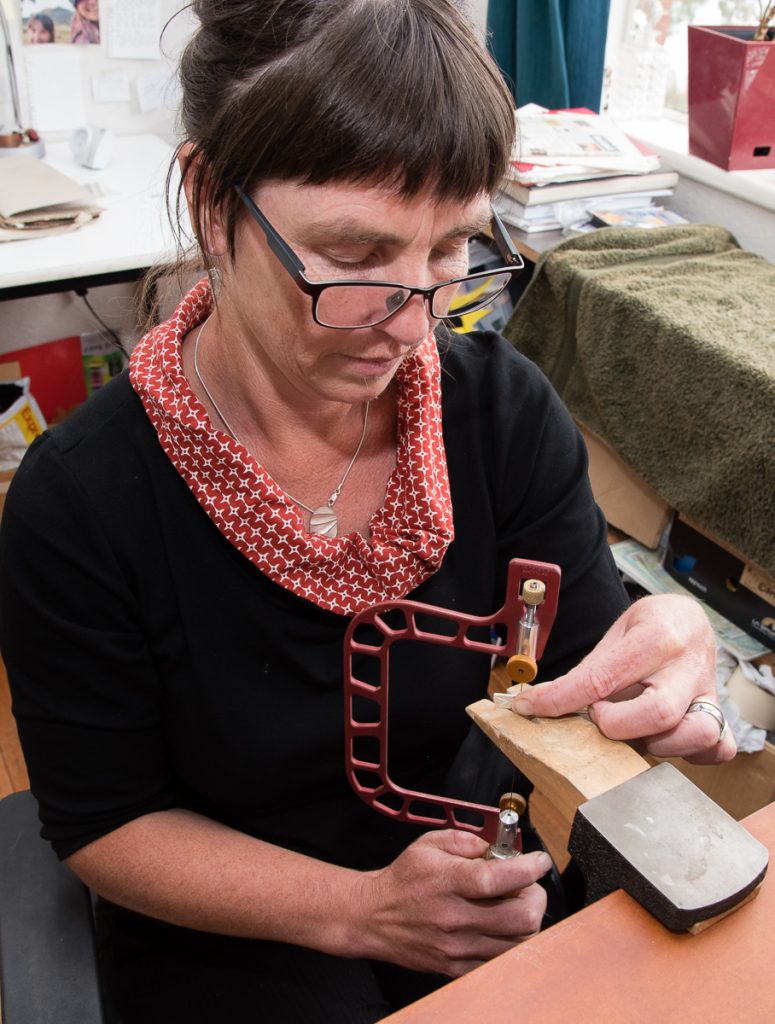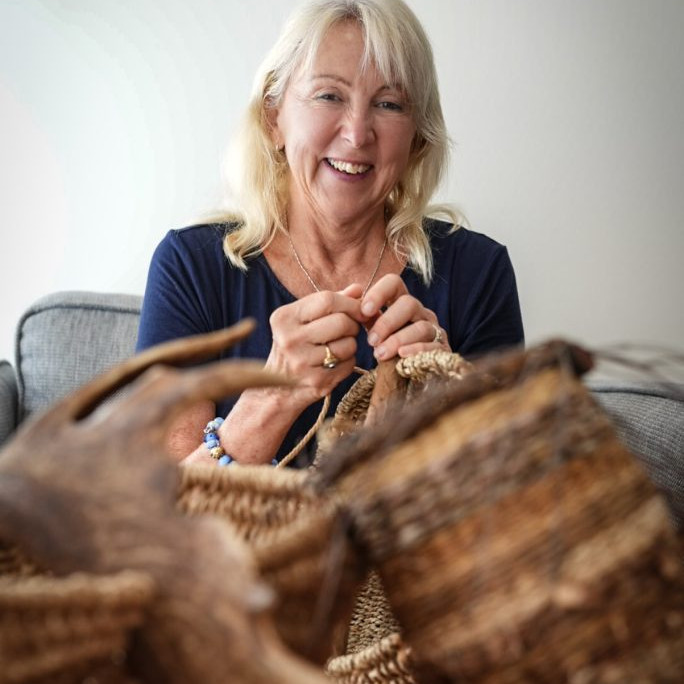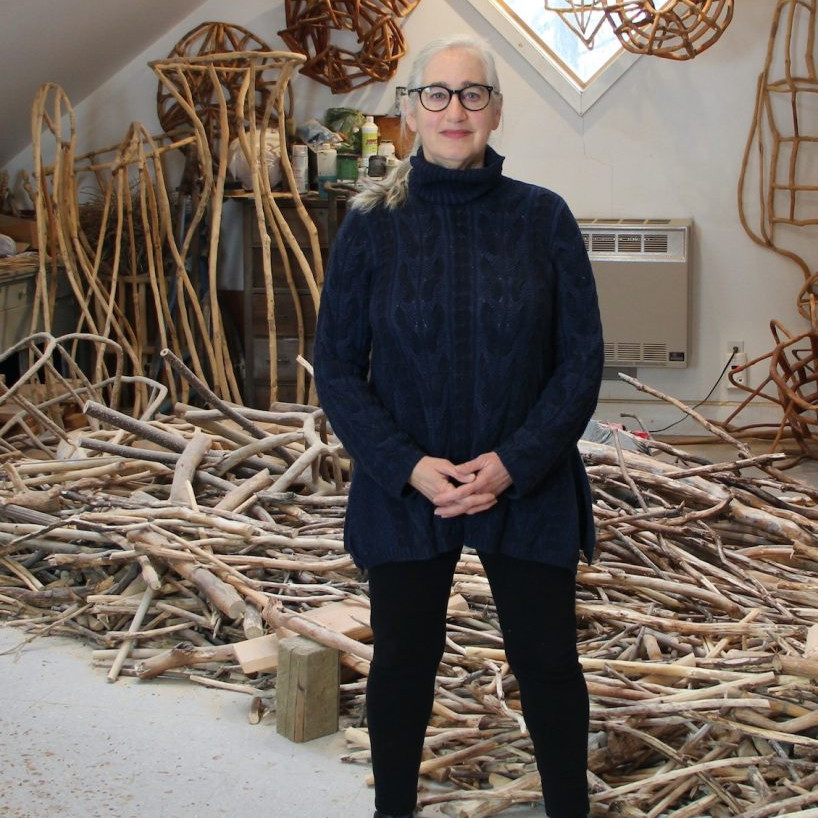Olivia Hickey Jeweller
You are preparing for your upcoming Wilderness residency in 2019.
Can you explain?
I have been awarded a residency by Arts Tasmania for a 6-week residency based at Lake St Clair. This will be undertaken in two three week blocks to allow for a flow between the landscape and my studio. Its focus is to develop and refine techniques and materials to enable me to work in remote and wild landscapes. In 2016 I had a similar residency at Cradle Mountain that lead into my first exhibition that was focused on the land there and this residency is the next step in my explorations.
The residency is part of a larger project that will take me a year and a half to complete in which I plan to walk much of the land that you can see from the Overland Track than runs through Cradle Mountain- Lake St Clair National Park. It will involve a number of solo bushwalks from 3-10 days duration into some wild and inaccessible areas.
Being in place is essential in developing both my way of working and my art. The freedom to travel allows me to locate and record organic and geological source material without removal from place. This is incredibly important to me as I deeply believe that land should be left unchanged by my passing.
Recently you have had the horror of Australian bushfires, literally at your doorstep. What preparation did you have in place?
I live on an off grid property surrounded by bush and I had to evacuate for most of two weeks due to bushfires. I travelled around with much of my workshop in my car and returned to my studio in the safer moments to work on some wedding rings that had been commissioned.
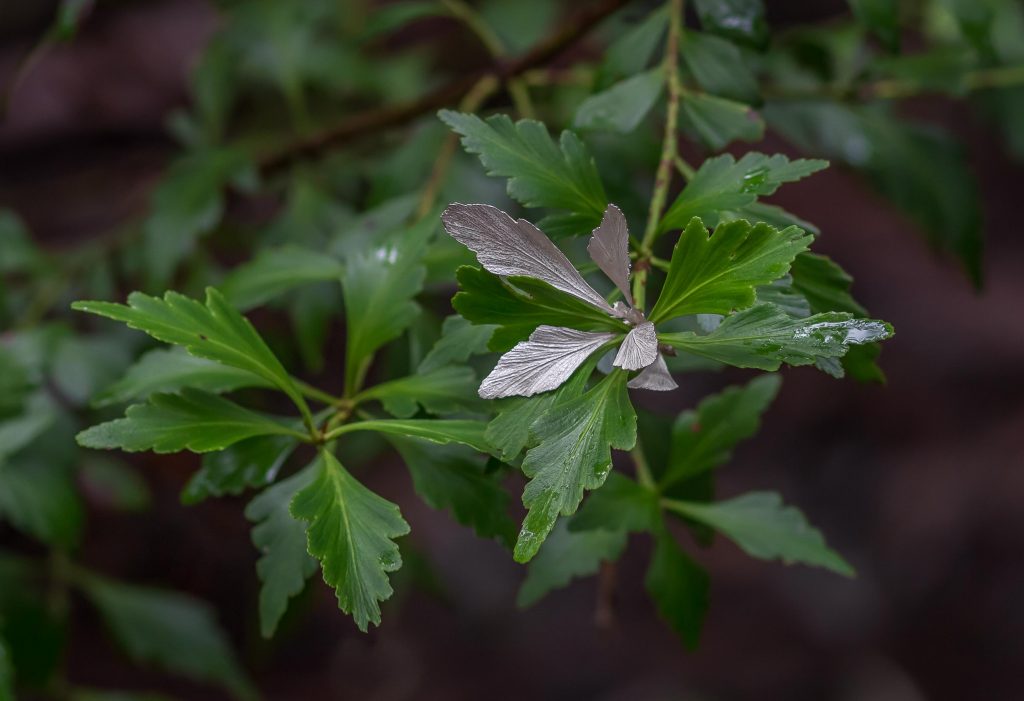
Celery Top Pine, Topophillia
The hardest thing during this time period, was not only the threat of losing my house but watching the fires threatened and engulf the irreplaceable wild landscapes of this island. I found myself pondering the question that if somehow, I could have made a deal to lose my home in order to save the wild places, I know that I would have.
How have the past fires influenced your work?
The first body of work that I created was site specific to the Tarkine, the Central Highlands and in the South West. In the Summer of 2016, just as I was installing it in an exhibition as fires were burning and threatening all of the places that I had responded to with my art. This was a deeply powerful personal journey as it made me question what, in fact, my work was about.
The landscapes that I focus on are all vulnerable places, human land use and more importantly climate change. My work is focused on plants from the time of the Gondwana supercontinent I focus on rainforest and alpine areas and these plants have little or no ability to regenerate after the hot fires that we now experience. These plants were once spread out over large tracts of land but as a result of continents moving as well as the climate warming and drying what we have now in Tasmania is the last refuges of these particular plants. This pattern is repeating through all southern continents
When I did my Cradle Mountain residency I went and visited the February Plains and saw first-hand the impact of the fires on this landscape. My resulting tried to encapsulate the loss that occurred. I exhibited photographs of burnt Pencil Pine Trees and the remains of the last hide hut combined with a collection of jewellery that was made from cast Pencil Pine needles.
The deep understanding of the preciousness of these places is what deeply underpins my work. I aim to be able to immortalise, through metal, photographs and prints to create a tangible record of these places for maybe even in my lifetime they may no longer be there.
My work is about the love of and joy in these wild places and I create tangible talismans of these places that others can connect with.
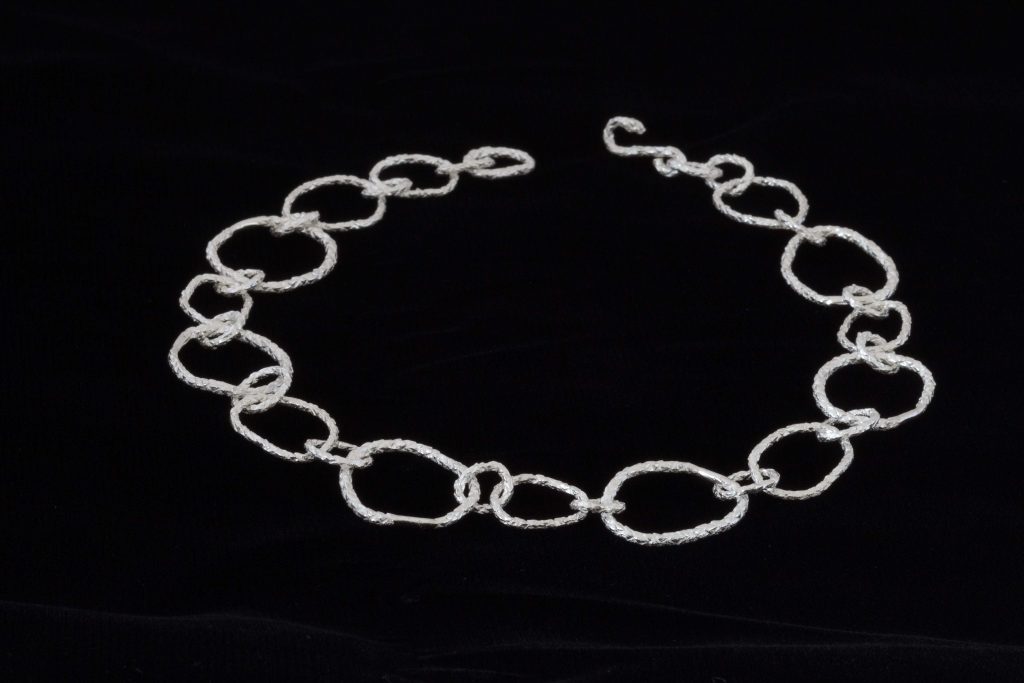
Pencil Pine necklace.
What lead you to becoming a jeweller?
I was travelling in Africa many years ago and chanced upon a south American man who was making and selling jewellery. I was immediately entranced by the ability to make metal flow, bend and move. I apprenticed myself to him for a couple of weeks and learnt some basic skills and when we parted he gave me a couple of sets of pliers, a bag of stones and a roll of silver wire. I then travelled for another couple of months and supported myself by what I made. Life took me in different directions at this time as I focused on outdoor adventures including a 110 day solo walk traversing the South Island of New Zealand.
I’ve worked in the outdoors for most of my life in roles of guide, instructor and teacher and have been involved with this in order to help people connect to natural places in order to care about it.
I suffered a major injury which left me unable to carry a pack, I was living in the Blue Mountains in NSW at the time and was searching for a way to be immersed deeply in land without an ability to travel large distances. I did a couple of short courses in Jewellery making and was absolutely captivated. One of my teachers was Marisa Molin and her work linked natural places and jewellery and I suddenly saw my path. I moved to Tasmania in 2013 to follow it.
How is your environment captured in your work?
My work is created through direct impressions of landscape. Moulding for jewellery is done In Situ and then the mould brought back into my studio for development. I use Photography to capture the wider landscape as well as to create lines that are used in etching and a number of organic printing techniques are used in place to create direct impressions.
I like working with the detail and scale of the natural forms as creating them into different mediums gives a wearer or a viewer a different perception of place. It creates of point of connection for the wearer, a talisman of place. It is my hope that it can transport people to the places that they are connected to.
I am a multimedia artist and my exhibition work is a contract of 3 dimensional jewellery works capturing the textures and scale of land and I contrast these with 2 Dimensional work of photographs or prints to talk of the wider landscape
You comment, “I am enthralled by the hidden details within the land and find myself captivated by the complexity and the beauty in the small.” Comment.
There is an activity that I have done numerous times in my life when I have worked with people in the outdoors. I get them to study a small piece of land and just observe, the colours, textures, diversity and coming and goings of ants. When this process starts. I have noticed that people get immersed in their small piece of land. At the end of this I get them to lift their eyes and try and get them to imagine how many times that size plays out in the view that they see and the diversity within the land that they can see.
My way of seeing land is like this. I am familiar with the ‘big picture’ of land and easy to see it just as a forest or a mountain but once one slows down and starts to look it becomes incredibly diverse. My work aims to capture that, this fern, this leaf, these patterns on bark. I’m utterly fascinated. My moulding for jewellery is an extension of this.
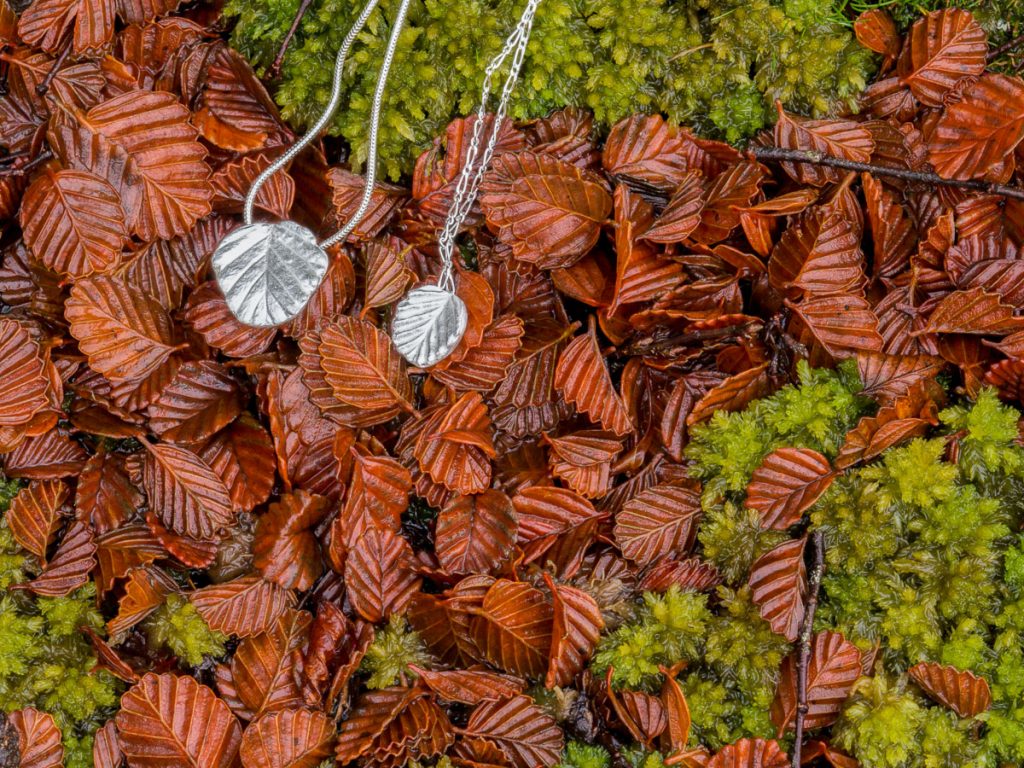
Fugus pendants
Take one of your photographs that has helped to lead you a series of jewellery. Discuss.
I have been focused on the process of casting organic objects into metal. I observed that these cast forms were in many ways the opposite of the places that I was seeking to represent; permanent versus impermanent, ephemeral versus solid and fragile versus robust. This created a tension and became the focus of my investigation of how to accurately encode and communicate the landscape that they are a part of. I returned the cast pieces to Land and observed that although they were a different material they still belonged in Place. I photographed my work in place and discovered that only the action of placing it on the landscape of the body turned it into jewellery.
This discovery lead to a body of work ‘Topophilia’ that explored this theme. The cast pieces were turned into jewellery and exhibited within and removable from the photograph. The concepts behind this discovery remains the underlying concept of my work.
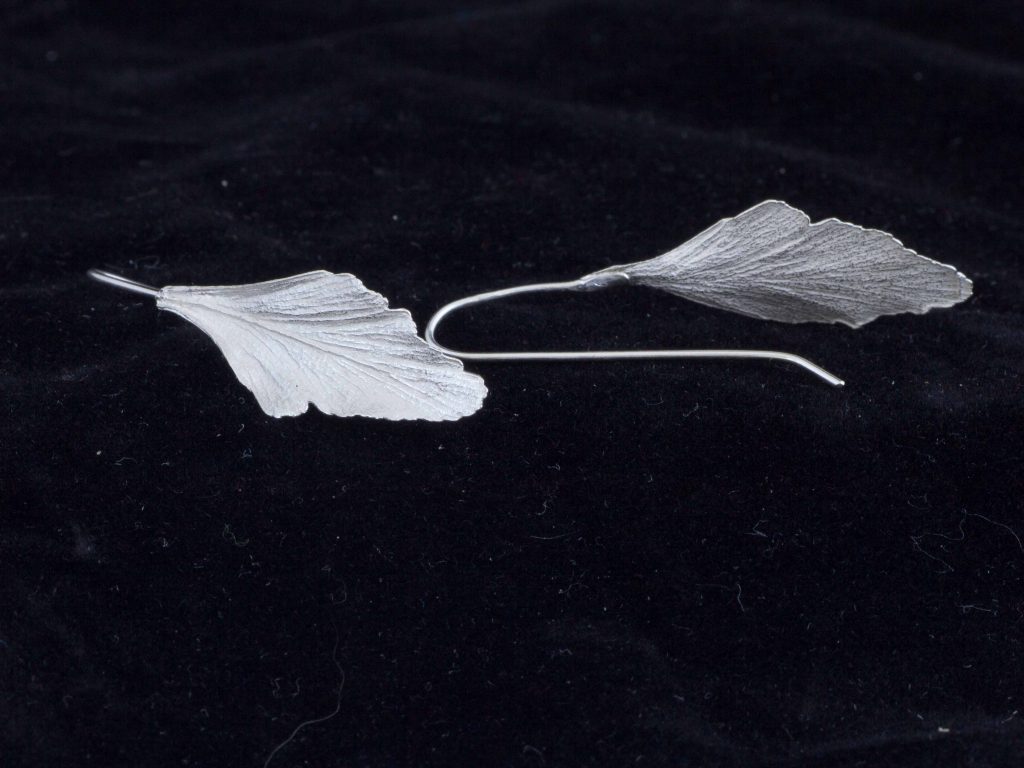
Celery Top earrings
Take your piece Lichen and explain briefly the techniques your use this this work.
I use the lost wax casting method to create much of my work. It gives me the ability to transmute organic objects directly into metal which then allows me to create wearable objects. I fill a flask with plaster encasing the organic object and place it in a kiln which burns out the organic matter. The cavity that is left is then filled with molten metal.
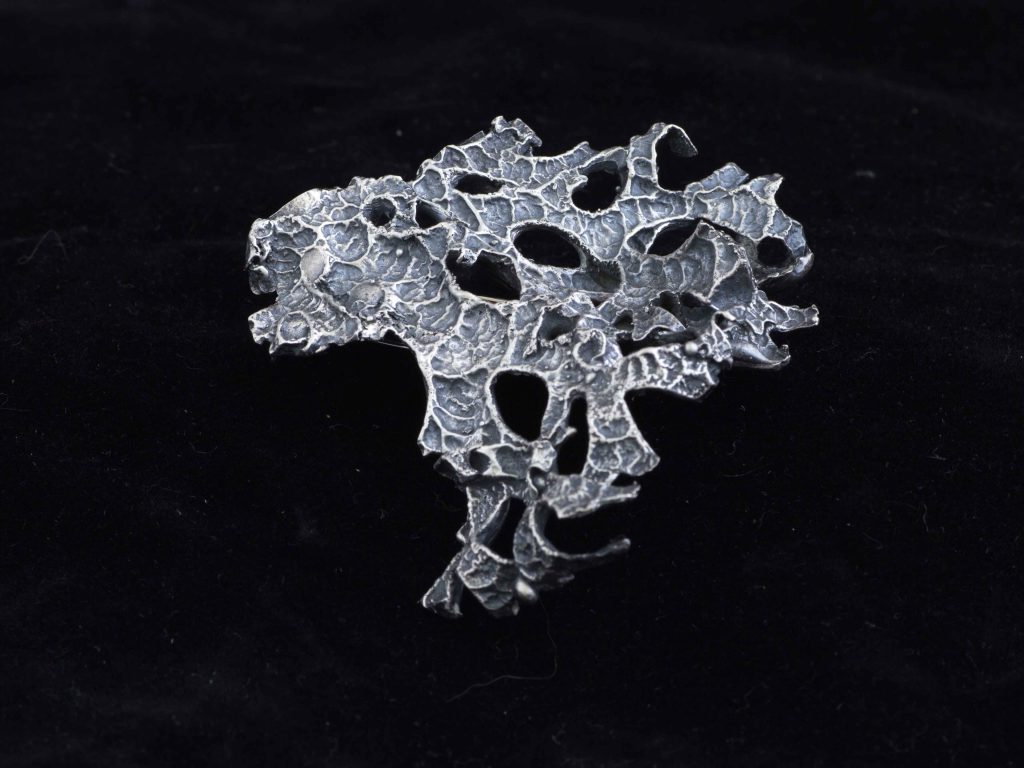
Lichen
Can you expand on your Tarkine fern rings?
I was involved in a conservation art project called Tarkine in Motion and I based myself in the rainforest in areas that were due to be logged. My eyes were drawn to the diversity of ferns in this landscape. I was experimenting with techniques to mould the forms in order to be able to take away impressions of these plants. I returned to my studio with the moulds.
These developed into a series of stackable rings and has expanded to a number of different plant imprints. When I created my first gold ring I realised that I found the medium to accurately encode the preciousness of place when I discover them in the bush.
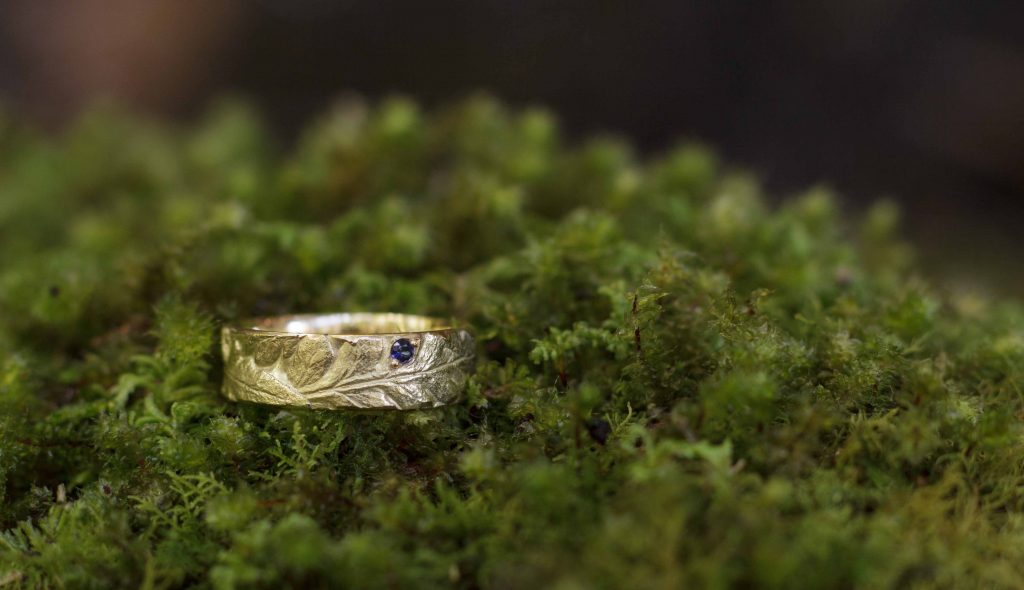
Gold Tarkine ring – Batswing Fern
Discuss the seasons of Tasmania and their connection to your work.
As I am a land artist and do much of my work in place the seasons directly influence my work. The warmer months combined with the longer days lend themselves to pack carrying journeys where moulding, photography and impressions of rocks can be taken. Winter is more of a time to go inwards and develop my ways of working as moulds cannot cure in time over winter and the weather is harsher. However, winter walks are a passion of mine and its where photography comes into play as it captures the essence of this land being a glacial landscape.
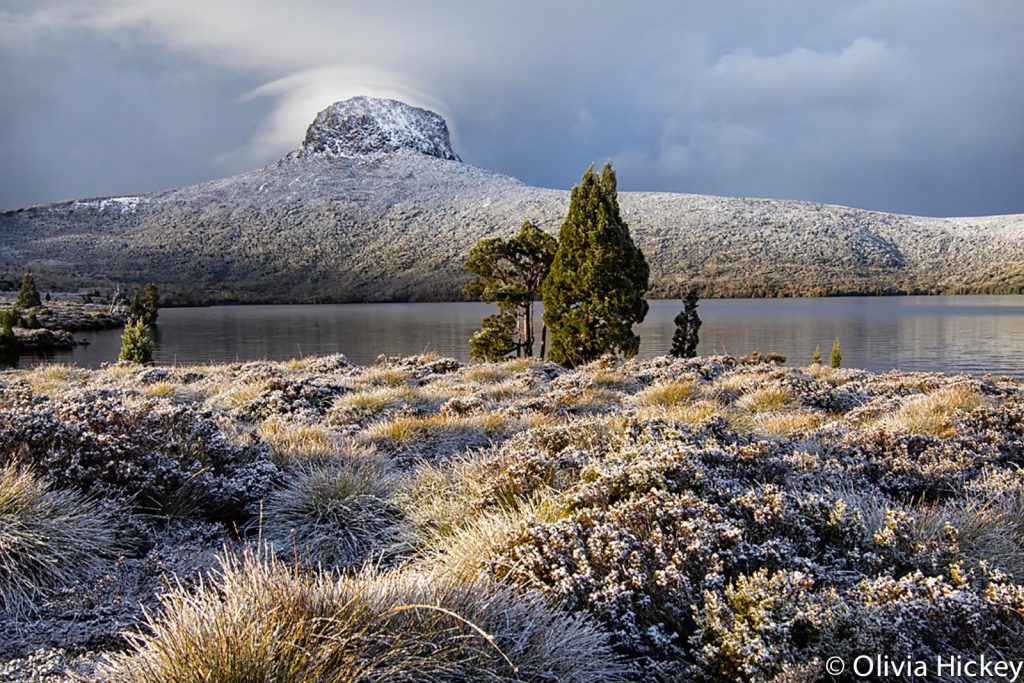
Passing Snow Flurries
Contact details:
Olivia Hickey
Olivia Hickey, Tasmania, Australia
Interview by Deborah Blakeley, April 2019
Think a colleague or friend could benefit from this interview?
Knowledge is one of the biggest assets in any business. So why not forward this on to your friends and colleagues so they too can start taking advantage of the insightful information the artist has given?
Other artists you may be interested in:


